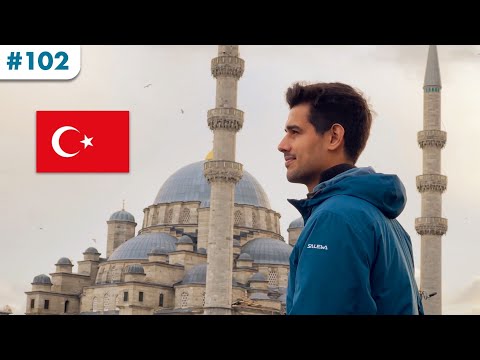
Turkey is not just a crossroads of continents and cultures but also a tapestry woven with the threads of numerous civilizations, each leaving behind a rich heritage evident in its awe-inspiring mosques. These mosques are not only places for spiritual gatherings but also monuments of artistic and architectural prowess, showcasing centuries of Islamic art and culture. A visit to Turkey’s most notable mosques offers travelers an enriching experience steeped in history, spirituality, and architectural beauty.
**1. Hagia Sophia (Ayasofya), Istanbul**
Originally constructed as a Christian cathedral in 537 AD under the Byzantine Emperor Justinian I, Hagia Sophia was converted into a mosque following the Ottoman conquest of Constantinople in 1453 by Sultan Mehmed II. This architectural masterpiece, now functioning as a museum, stands as a symbol of the confluence between Christianity and Islam. Its massive dome, beautiful Christian mosaics alongside Islamic calligraphy, and majestic minarets make it a unique monument that has inspired various architectural styles across centuries.
**2. Sultan Ahmed Mosque (Blue Mosque), Istanbul**
Facing Hagia Sophia stands another breathtaking structure, the Sultan Ahmed Mosque, known popularly as the Blue Mosque due to its blue-tiled interior. Built between 1609 and 1616 during the rule of Ahmed I, this mosque is famous for its six slender minarets—a rarity that initially caused controversy because the same number was found in Mecca’s holy mosque. The interior is adorned with more than 20,000 handmade ceramic tiles in various tulip designs and more than 200 stained glass windows which create an ethereal atmosphere when light penetrates through them.
**3. Süleymaniye Mosque, Istanbul**
The Süleymaniye Mosque combines grandeur with exquisite architectural prowess. Constructed by Sinan—the most famous Ottoman architect—during Sultan Suleiman the Magnificent’s reign from 1550 to 1557, this mosque crowns one of Istanbul’s seven hills and dominates the skyline with elegant proportions. Sinan designed it to include not only religious facilities but also educational ones like madrasahs (schools), hospitals, kitchens for poor feeding (imaret), which underscored Islamic teachings about community welfare.
**4. Selimiye Mosque, Edirne**
Another masterpiece by Sinan is located in Edirne—once the capital city before Constantinople was conquered. The Selimiye Mosque represents perhaps Sinan’s highest achievement; completed when he was over 80 years old in 1575 under Sultan Selim II’s patronage. Known for its incredibly high central dome which appears to be suspended miraculously from heaven itself gives an effect unparalleled among other mosques around the world.
**5. Divriği Great Mosque and Hospital (Ulu Camii ve Darüşşifası), Sivas**
A UNESCO World Heritage site since 1985, this mosque-hospital complex built-in 1228-29 under Ahmet Shah from Mengücek dynasty showcases an eclectic mix of Byzantine art influence merged with traditional Islamic architecture elements like intricate stone carvings around doorways representing Quranic verses or depictions of paradise.
Visiting these mosques gives insights into Turkey’s historical depth while capturing snapshots of different eras where architecture served both devotion and artistry seamlessly woven together.
Whether you’re exploring bustling Istanbul or venturing into lesser-known cities like Edirne or Sivas — each step inside these timeless sanctuaries reveals layers upon layers of history echoing tales from past civilizations blended harmoniously within spaces meant for prayer and reflection.
For any visitor looking to comprehend Turkey’s soul—a tour among these divine structures should figure prominently on their itinerary.
